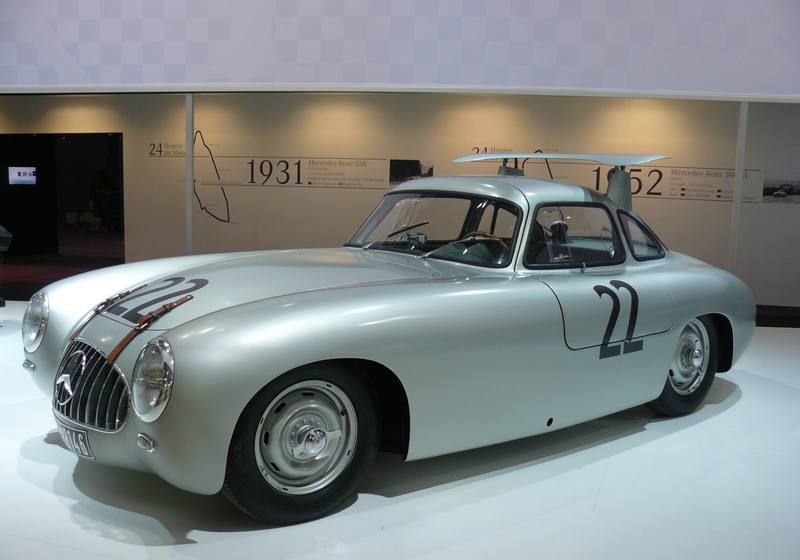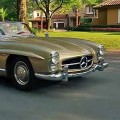Original Article – beyondtheflag.com
The Mercedes-Benz Gullwing 300SL is one of the most iconic sports cars ever created. Its revolutionary yet stunning design making it one of the most beautiful as well.
When it was revealed to the world in 1954, it was hardly a secret that sitting below its sweet exterior lied a young yet dominating racing pedigree (Werner Engel winning the 1955 European Rally Championship driving a 300 SL was still a year away).
Two years before the curtains were pulled back on the ‘Gullwing’, a car sharing its name and looking strikingly similar, won LeMans: the Mercedes-Benz 300SL W194.

The W194 300SL was the first Mercedes-Benz racing car to be designed since the end of World War Two, its overall look raising some eyebrows when first revealed, the arch like ‘Gullwing’ doors being the cause for such a reaction.
Though copied by a number of other car designers over the last sixty years, the doors were merely a consequence of the car’s high frame which left no room for conventional doors; the brilliant, though quite unsafe, innovation simply being a happy mistake.
Aesthetics aside, the W194 was an amazing race car. The grandfather of all SLs enjoyed a number of successes in 1952 which saw it claim first and second place at the famous 24-hour race, a victory at the second Carrera Panamericana (a taxing 3100km road race that was held in Mexico between 1950-1954), and wins at both Bern-Bremgarten and the Nürburgring.
A testament to the the W194’s brilliant and enduring engineering could be found within its successor, the W196. The W196 went on to win the Formula One world championship twice (1954, 1955). However, it would also be Mercedes’ last race car for a very long time.
Though it would seem Mercedes would see out a long and dominant racing campaign, one which would’ve sprung off of the success of the W194, a shadow was soon to set over Mercedes and the racing world.
After the 1955 LeMans disaster, Mercedes scrapped all of their racing projects for the next thirty years, the W194’s dominant reign becoming a distant echo before the decade of its creation had even ended.



